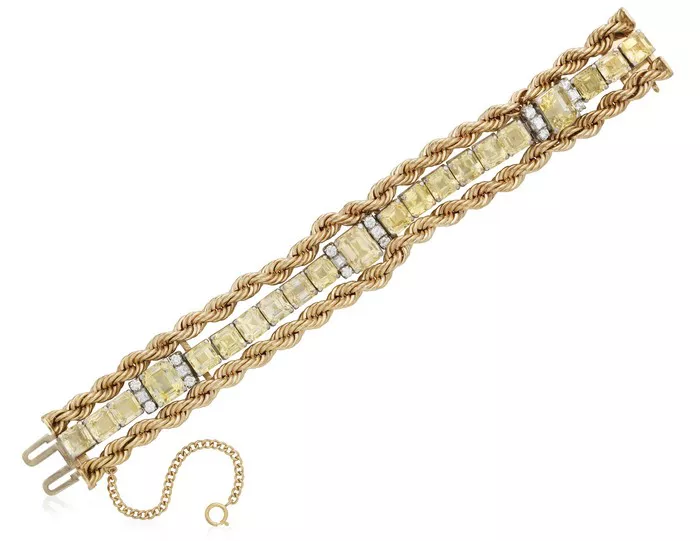Luxurious and captivating, diamond tennis bracelets hold a special allure that transcends time and trends. These elegant pieces of jewelry have become synonymous with sophistication and status, adorning the wrists of the fashion-forward and elite. However, their undeniable beauty often comes with a hefty price tag. Delving deeper into the realms of craftsmanship, material quality, brand prestige, and historical significance unveils the reasons behind why diamond tennis bracelets command such high prices in the jewelry market.
Material and Quality of Diamonds:
At the heart of every diamond tennis bracelet lies the brilliance of its diamonds. The types of diamonds used and their quality play a pivotal role in determining the bracelet’s price. Diamonds are graded based on the four Cs: cut, color, clarity, and carat weight.
In tennis bracelets, diamonds typically range from small to medium-sized stones, often falling within the SI (slightly included) to VS (very slightly included) clarity grades and the G to H color range. However, higher-end bracelets may feature diamonds with superior clarity and color grades, such as VS1 or even internally flawless (IF), and colors in the near-colorless to colorless range.
The precision of the cut is paramount in enhancing the diamonds’ brilliance and fire, contributing to their overall appeal. Well-cut diamonds with excellent proportions reflect light in a mesmerizing dance, elevating the bracelet’s allure and, consequently, its price.
Craftsmanship and Design:
Crafting a diamond tennis bracelet requires impeccable skill and attention to detail. Each diamond must be meticulously set to ensure a seamless and harmonious flow. Whether it’s the classic prong setting or the more modern bezel setting, every choice in design impacts the bracelet’s aesthetic appeal and, consequently, its value.
Skilled artisans devote hours of labor to meticulously handcraft each bracelet, ensuring that every diamond is securely and precisely set. The intricacies of the design, such as the arrangement of diamonds and the complexity of the setting, add to the bracelet’s allure and elevate its price.
Metal Settings:
The choice of metal for the bracelet’s setting further enhances its luxurious appeal. Precious metals like 18K gold or platinum are commonly used for their durability, luster, and timeless elegance. These metals serve as the perfect backdrop to showcase the brilliance of the diamonds, adding to the bracelet’s overall value.
The purity of the metal, as indicated by its karat weight or platinum content, also influences the bracelet’s price. Higher karat gold or platinum settings command a premium due to their inherent value and rarity.
Brand and Rarity:
The reputation of the brand behind the tennis bracelet plays a significant role in its price. Established jewelry houses with a legacy of excellence and craftsmanship often command higher prices for their creations. The prestige associated with these brands adds to the bracelet’s perceived value and desirability.
Furthermore, the rarity of certain designs or diamond colors can significantly impact the bracelet’s price. Limited-edition pieces or those featuring rare and coveted diamond hues, such as fancy pink or blue diamonds, fetch premium prices due to their exclusivity and uniqueness.
Durability and Insurance:
Given the substantial investment involved, durability and insurance are essential considerations for diamond tennis bracelets. While these bracelets are designed to withstand daily wear, they are not immune to accidental damage or loss. As such, obtaining insurance coverage is advisable to protect against unforeseen events and safeguard the bracelet’s value.
High-quality craftsmanship and durable materials ensure that the bracelet remains a timeless treasure for generations to come. However, regular maintenance and care are crucial to preserving its beauty and longevity.
Market Trends:
The pricing of diamond tennis bracelets is also influenced by current market trends. Fluctuations in diamond prices, changes in consumer preferences, and shifts in the global economy can all impact the bracelet’s value. As demand for luxury goods ebbs and flows, so too do the prices of diamond tennis bracelets.
Moreover, emerging trends in jewelry design and innovations in diamond cutting techniques can influence the pricing dynamics of tennis bracelets. Designs that resonate with contemporary tastes or feature innovative craftsmanship may command premium prices in the market.
Historical and Cultural Significance:
The allure of diamond tennis bracelets extends beyond their intrinsic beauty to encompass their historical and cultural significance. Originally known as “eternity bracelets” or “line bracelets,” they gained popularity in the 1920s and became synonymous with elegance and sophistication.
The term “tennis bracelet” emerged during the 1987 U.S. Open when tennis champion Chris Evert lost her diamond bracelet during a match and requested to halt the game until it was found. This incident propelled the bracelet into the limelight, cementing its status as a coveted fashion accessory.
Over the years, diamond tennis bracelets have been worn by iconic figures and featured prominently in popular culture, further fueling their desirability and mystique. Their timeless appeal transcends generations, making them a cherished heirloom passed down through families.
In conclusion, the allure of diamond tennis bracelets lies not only in their exquisite beauty but also in the craftsmanship, materials, brand prestige, and cultural significance they embody. While their price may be steep, it is a testament to their enduring appeal and status as timeless treasures that captivate hearts and minds for generations to come.

